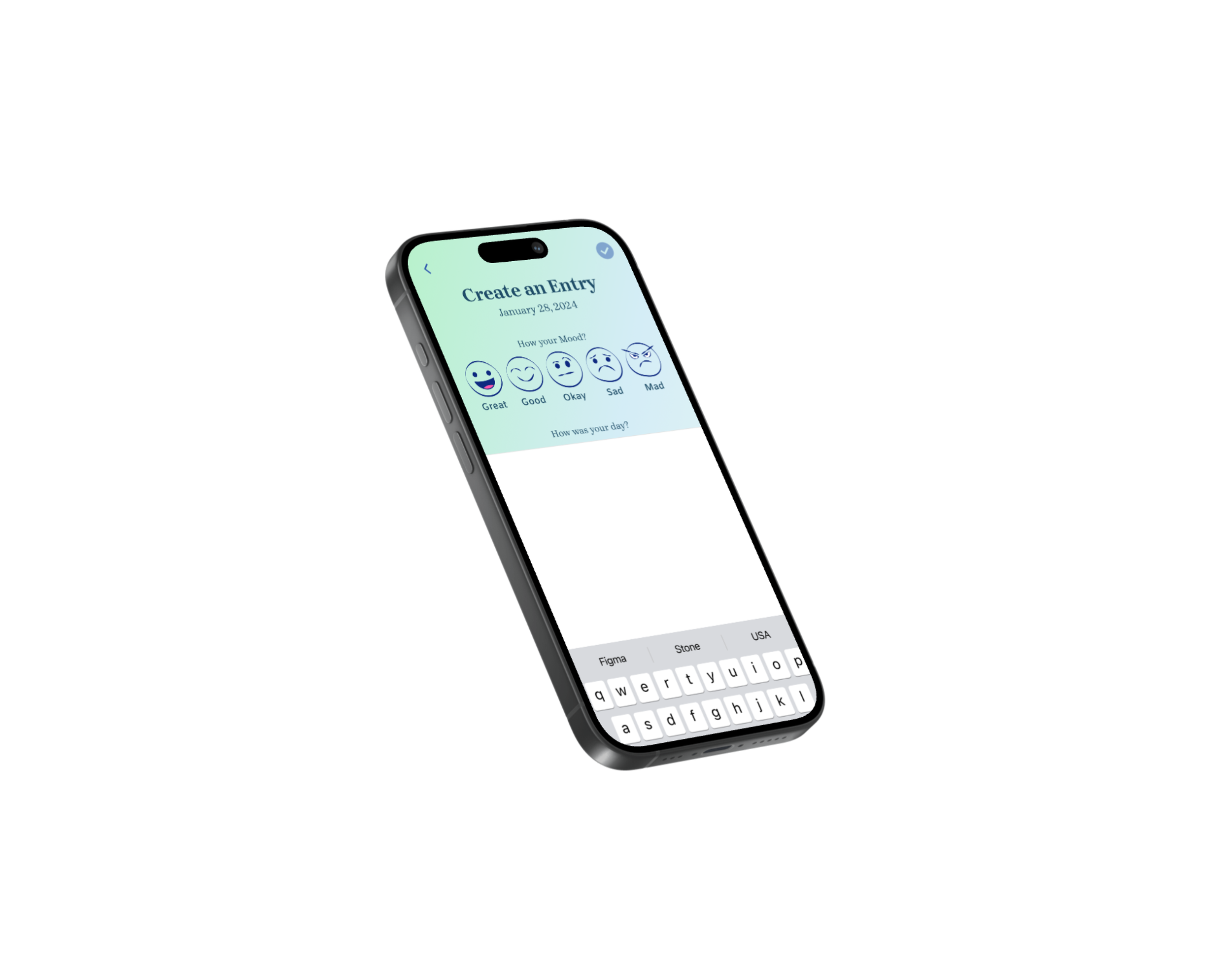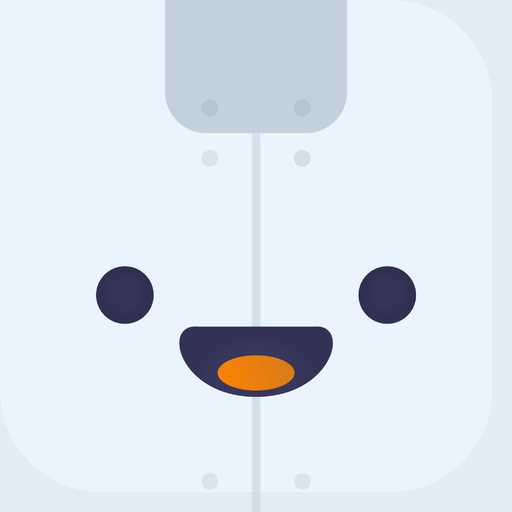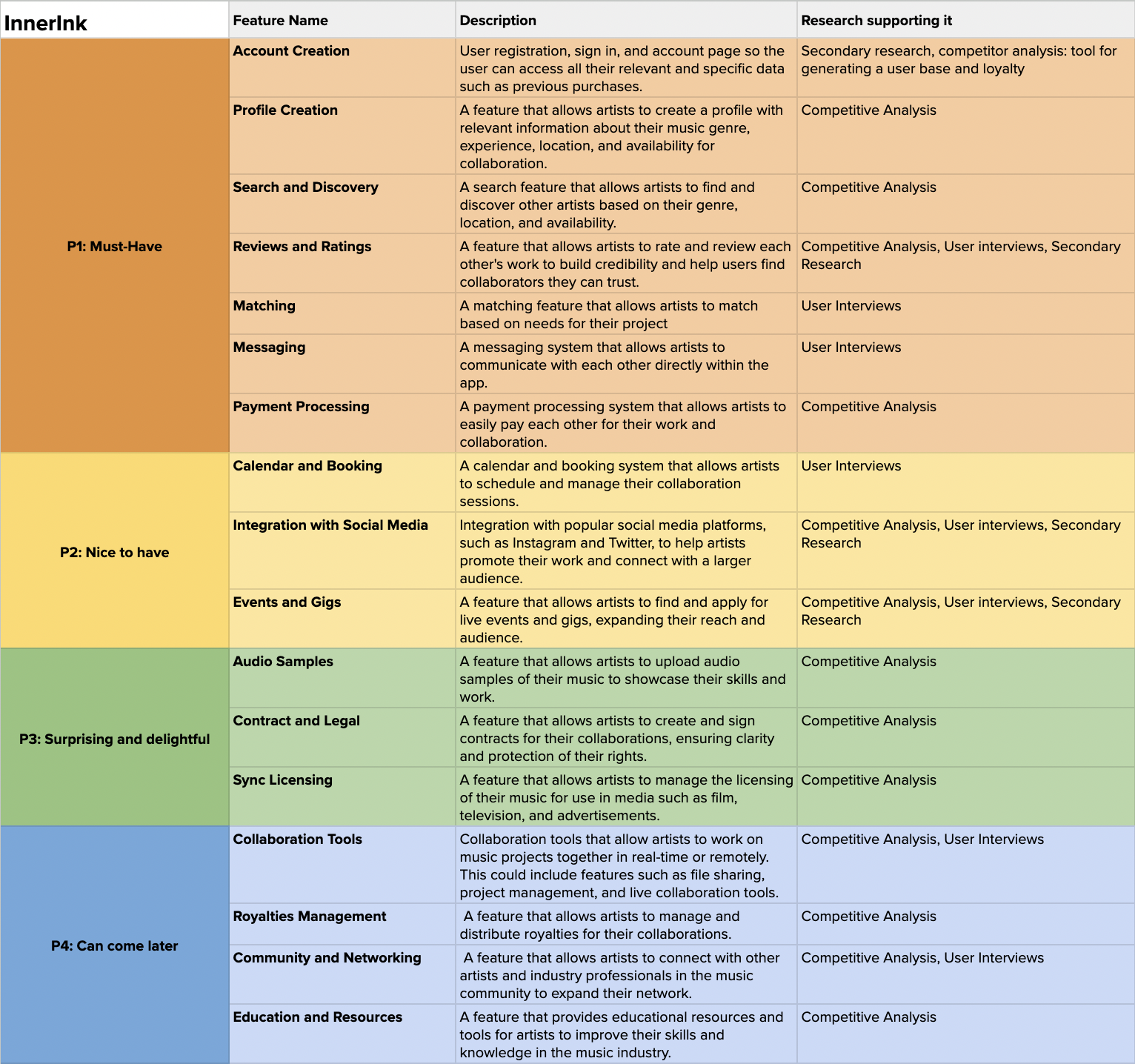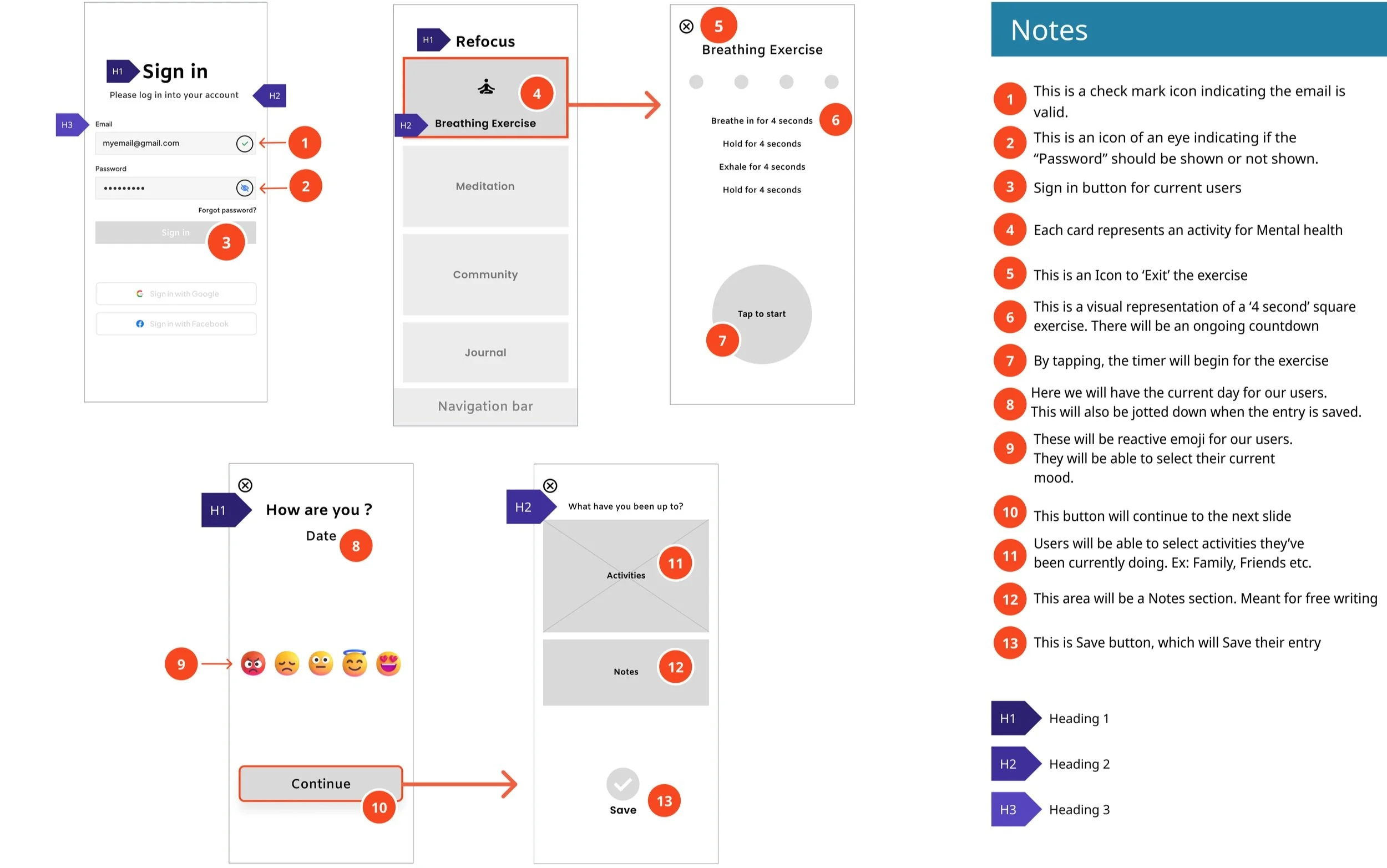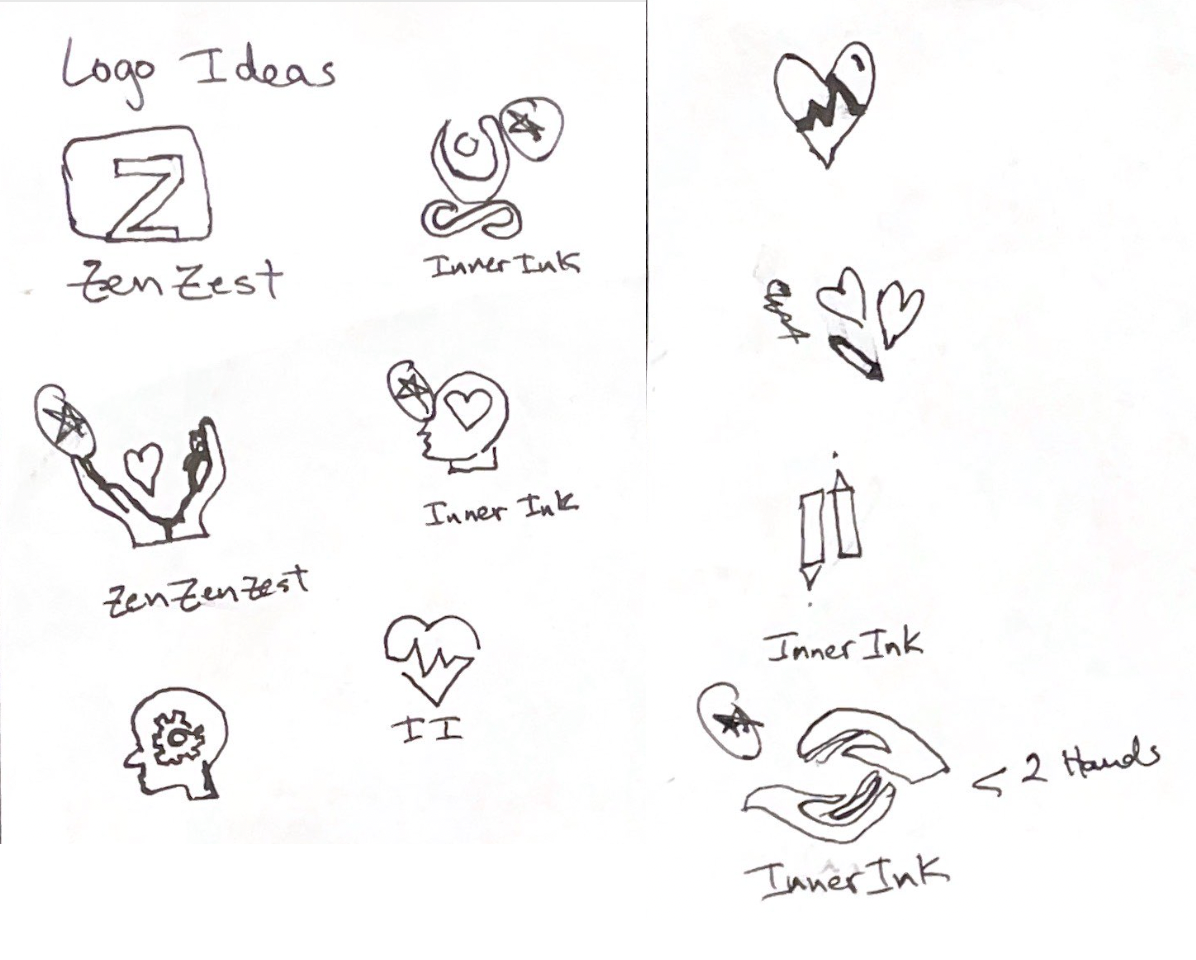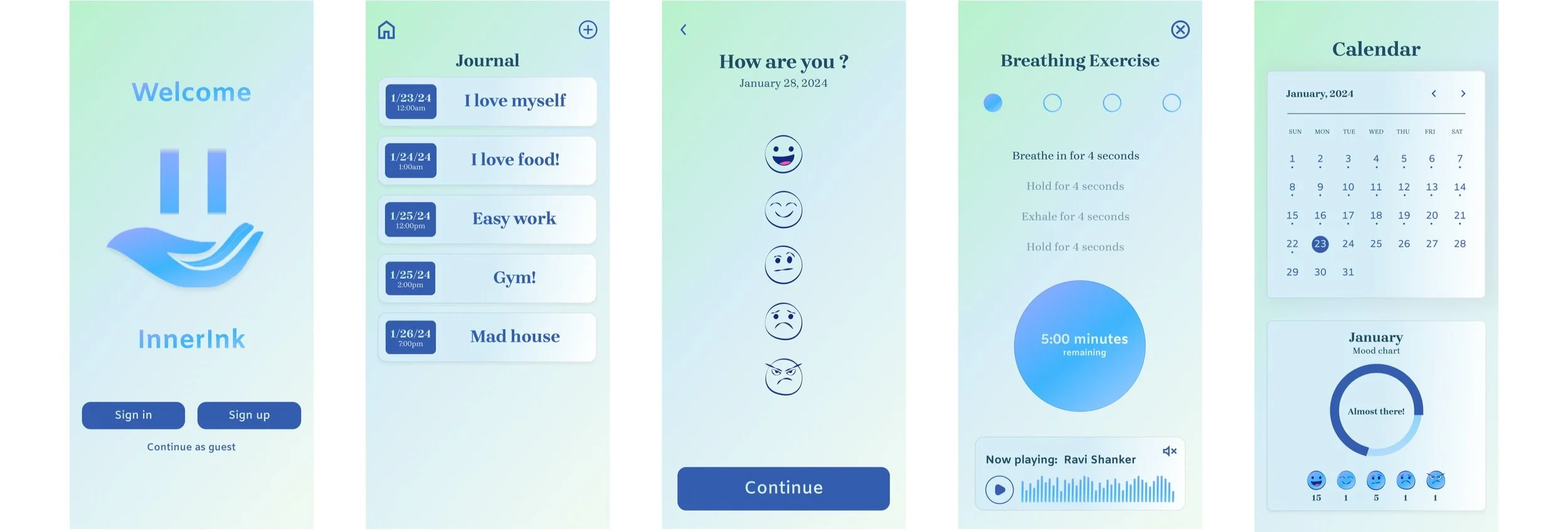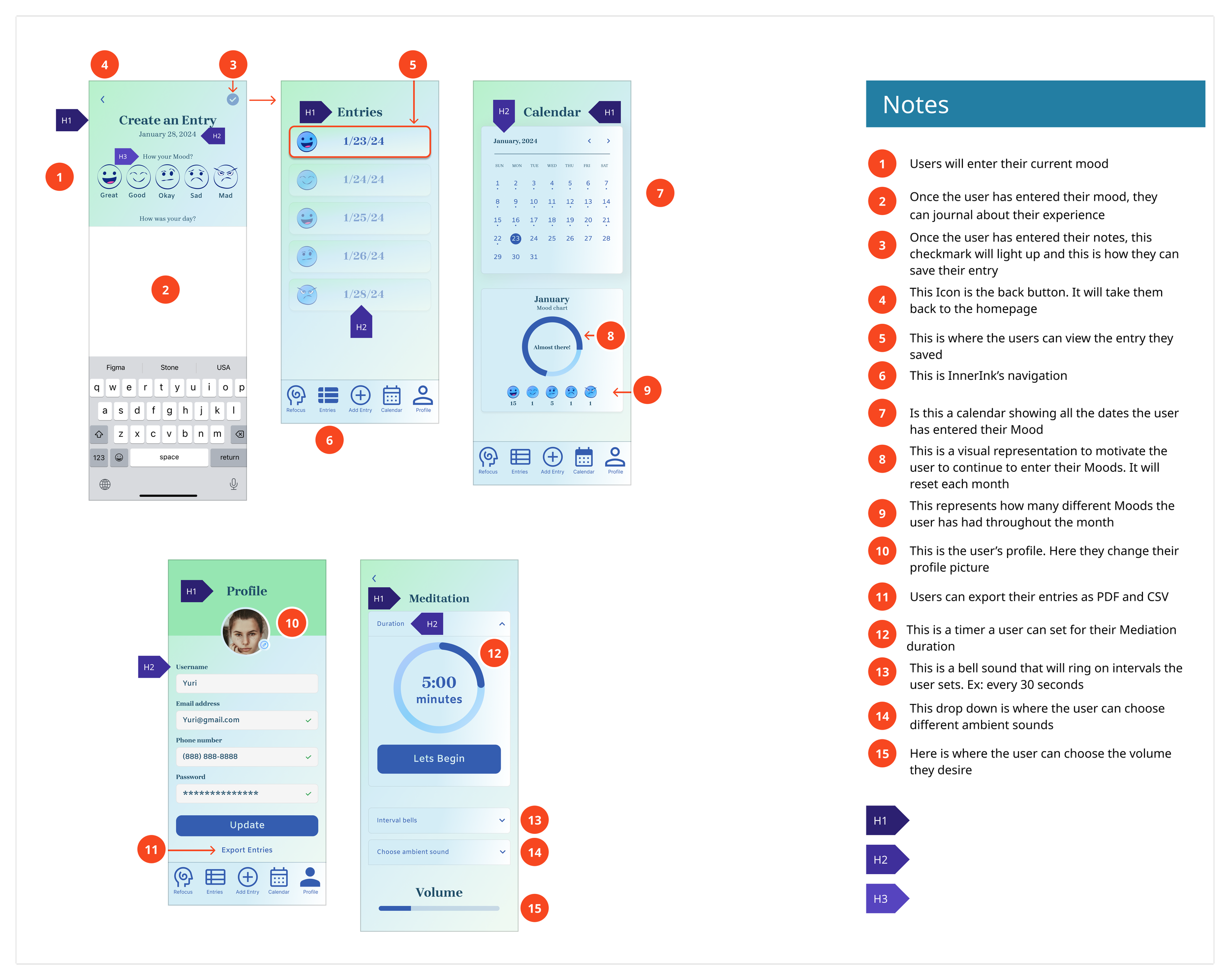Welcome to InnerInk!
Overview
InnerInk is a present day mental health monitoring app designed to empower our users on their well-being journey. This app seamlessly records data every day for mood fluctuations and stress levels. Through intuitive visualizations and personalized insights, InnerInk encourages users to cultivate self-consciousness which will foster a proactive method to mental health.
With included assets and elective community assist, the app will offer a holistic and reachable platform for people searching to optimize their mental fitness.
As a Product Designer, my primary focus was to downsize the application for user’s to easily track their mood. As a secondary role, I created the logo design, assisted with typography and color palette.
Role
Product Designer
Timeline
October - February, 2024
Product
iOS Mobile Application
The Problem
We want to awareness and recognition of mental well-being in our society. With increased stress, social pressures, and the prevalence of mental health challenges lead people to seek accessible tools for managing their emotional and psychological states.
Product Goal
InnerInk will offer a convenient and private solution for users to monitor, understand, and address their mental health concerns, providing a proactive and empowering approach to emotional well-being in our digital age. The primary goal of InnerInk is to empower users to proactively manage and improve their mental well-being. This involves providing tools and features for self-monitoring, mood tracking, and stress management. Our mobile application aims to offer personalized insights and resources, self-awareness and resilience. Additionally, fostering a sense of community and connection by integrating support networks is the goal, creating a comprehensive platform that addresses various aspects of mental health for a diverse user base. Ultimately, the objective is to contribute to a positive and holistic approach to mental health care, making it accessible and manageable for individuals in their daily lives.
Competitive Analysis
Daylio
Calm
MoodNotes
Reflectly
Strengths
Daylio stands out with its simple and intuitive interface, customizable moods, and activities with personalized icons, and the emphasis on daily mood tracking fosters a consistent habit for users.
MoodNotes is known for integrating mood tracking with cognitive behavioral therapy, providing users with a holistic approach to emotional well-being. The app's structured journaling prompts and insights into thought patterns help users gain a deeper understanding of their emotions and develop positive thinking habits.
Calm is praised for its extensive library of guided meditations, sleep stories, and relaxation exercises, offering users a diverse range of mindfulness and stress-relief content.
Reflectly excels in its use of artificial intelligence to offer personalized journaling experiences, adapting to users' emotions and providing relevant prompts and insights.
Weaknesses
Daylio - Quotes are inappropriate and too costly
MoodNotes - You can't do much without premium
Calm -No updates
Reflectly -Not the best for journaling. Some users say it is confusing based on its UI. People with mental health issues may want an app they can use for free
Research plan
Research Goal
The research goal for InnerInk aims to understand user behavior and improve mental health outcomes. This involves analyzing user engagement patterns by assessing the effectiveness of mood tracking on a daily basis. The ultimate objective is to optimize the application to better support users in managing their moods and improving their overall well-being.
Research Objectives
Determine what goal they have by using a Mood tracking mobile app.
Will users feel like they've gained insight into their emotional patterns, triggers, and fluctuations over time?
Methodologies
User Interviews
Competitive SWOT Analysis
Key questions to ask our Candidates
How do you prioritize self-care?
Can you name a time where you faced a challenge in terms of mental health?
Have you used strategies for self care in the past?
In what ways do you create a supportive environment for your mental health?
How do you balance between work and personal life?
Have you used resources or tools you find helpful in enhancing your emotional resilience?
How do you handle stressors that are beyond your control?
What advice would you give to someone who is struggling with their mental health?
User Interview Candidates
We were fortunate to interview 3 candidates for our InnerInk research study. One user currently uses a Mood tracking app and two users feel it could be beneficial. All three users have expressed pain points in their lives and how tracking their Mood could give an insight on how they can better manage it.
We were able to ask them 8-10 questions each and the interviews on average were 15 minutes long. Their age group are 26-40.
Discovery Research
Brief summary
We found inconsistent sleep patterns can really take a toll on our mental well-being and by underlining the importance of switching off from work outside of our usual hours is a great way to start our mental health journey. Tools like guided meditations and affirmation apps offer valuable support for mental health.
Even so, finding time for self-care daily demands can be challenging. Engaging in self-reflection and compiling a list of accomplishments are vital practices that blend professionalism with personal care, providing practical ways to enhance overall well-being.
User Motivations:
Sleep patterns that are irregular can mentally drain you
Detach from work when not at work
Understanding and exploring why you do what you do is very key to maintaining mental health. Understanding triggers has been useful
Things that could further help me are guided meditations and affirmations within apps
I don't always have the time to look after my mental health, depends on the day
Self reflection is usually the toughest part but necessary
User Pain Points:
Consistency is key, an alarm or daily push notification from an app to “check in” would be awesome
Be intentional with how you spend your time, write down the things you need to get done
Not enough time to look after my mental health, depends on the day
1on1’s with someone would be a great tool to have
Things that could further help me are guided meditations and affirmations within the application.
Affinity Map
Welcome to Affinity mapping! We were able to successfully interview our 3 candidates. Each interview was 10 minutes and we saw 5 key similarities, keeping a Busy mind, Writing things out, Going to therapy, helpful features in a Mental Health application that would them succeed and lastly, the importance of Self care.
User Persona
Here we have Miguel. He is an experienced accountant who loves numbers and hits the gym to stay healthy. Despite his success and supportive spouse, work stress gives him anxiety and depression. He wants to take care of his mental health and plans to use a mood tracking app for insights. Miguel aims to balance work, marriage, and his struggles, using technology to understand himself better. His goal is a happier, more balanced life.
Key findings about Miguel
Professional Success: Miguel is an accomplished accountant with a strong passion for his work.
Passion for Fitness: He prioritizes his physical well-being by regularly engaging in gym workouts.
Struggles with Mental Health: Despite his achievements, Miguel faces challenges with anxiety and depression, likely due to the high-pressure nature of his job.
Recognition of Mental Health Importance: Miguel acknowledges the importance of mental health and is actively seeking ways to improve it.
Determined: Miguel demonstrates perseverance in both his professional and personal life.
Balanced: Despite his challenges, he strives to balance his career, relationships, and well-being.
Work-Related Stress: Miguel experiences anxiety and depression due to the demanding nature of his job.
Supportive Environment: Having a supportive partner suggests that Miguel values relationships and seeks understanding in his journey to better mental health.
POV:
I’d like to explore a way to consistently encourage daily tracking.
I’d like to explore a way to personalize users mood tracking experience
I’d like to explore a way to create a seamless interface that simplifies the process of logging moods and activities
I’d like to explore a way to leverage community features features to enable users to share insights, tips, and support that is related to mood tracking
I’d like to explore a way for users to have 1on1’s.
I’d like to explore a way for users to have guided meditations and breathing exercises
I’d like to explore a way to integrate self care routines.
How Might We...
How might we create a seamless interface that simplifies the process of logging moods and activities?
How might we leverage community features to enable users to share insights, tips, and support that is related to mood tracking?
How might we integrate 1on1’s for our users?
How might we create guided meditations and breathing exercises?
How might we integrate self care routines?
Key features:
Based on User interviews and Competitive analysis, this is a breakdown of features that are “Essential” requirements critical for project success, including core functionalities, basic security measures and compliance standards. They are non-negotiable and prioritized above all else. "Nice to have" features, while desirable and providing added value, are optional and may be deferred to later stages of development if resources permit.
Task-flows
Here is an example of InnerInk’s key Task-flows. This is a visual representation of how users will register their account, Enter their Current mood and utilize the Breathing Exercise feature. User registration is not required to provide a frictionless user experience, reduce barriers to entry, and encourage immediate engagement.
Wireframing
Below, are low-fidelity frames showcasing how a user would Start and Finish entering their mood.
Potential logo Ideas
Digitizing Main Ideas
Final Logo
The idea behind choosing this logo is to show how us as individuals have the control of our own happiness. Taking control of your happiness involves prioritizing self-awareness and mindfulness to understand our emotions and reactions. We can cultivate a positive outlook by focusing on gratitude and reframing negative thoughts. By investing in our personal growth and healthy habits to nurture our physical and mental well-beings can build strong connections within ourselves.
UI Kit
High Fidelity wireframes - Below you will find Key mock up of Sign In, Journal page, Logging todays mood, breathing exercise and calendar of all the days you’ve logged your mood.
Usability Testing
The research goal for InnerInk aims to understand user behavior and improve mental health outcomes. This involves analyzing user engagement patterns by assessing the effectiveness of mood tracking on a daily basis. The ultimate objective is to optimize the app to better support users in managing their moods and improving their overall well-being. Research Objectives Determine what goal they have by using a Mood tracking mobile app. Will users feel like they've gained insight into their emotional patterns, triggers, and fluctuations over time
clickable prototype
Methodologies
Remote testing
Recorded interviews
Usability Test - Results
InnerInk Prototype Motivators
I love the visuals on this app, gives you comfortable feeling
Love Journal idea, it helps keep track of everything
I love the Calendar idea
App is very inviting and has a good vibe to it
I think people can really use this to document how they feel
I like the Dots for the Breathing Exercise, helped guide me through the process
Meditation was straight forward
The Journal looks cool, it feel like i'm writing on a piece of paper
InnerInk Prototype Correction Notes
Have an option to add “what they do for living” in Meditation or in Journal sections - “Is the stress coming from my job? The longer hours I’m working?”
Isn’t the Journey the same as the Mood documenting?
Add a frame before the “Sign In” or “Mediation” that is welcoming, that will help users feel comfortable before getting started
For the “Breathing exercise” I’d like to see different options for the type of “Breathing exercise” - “I just finished running, how do I slow down my breath”
Add names under the icons
High Fidelity wireframes - Re-iteration
We merged Journal Entry with Mood Entry for a thorough experience. This allows one place for Entries to look back and reflect.
We added a Post-Meditation frame for users to document how they feel after Meditation.
Labeling navigation icons is crucial for accessibility, ensuring that all users, including those with visual impairments, can understand the purpose of each icon. Clear labels also promote clarity and consistency across the interface, helping users navigate effectively and reducing confusion. Additionally, labeled icons facilitate internationalization efforts and allow for easy adaptation to future changes in the application or website.
Final thoughts
Designing InnerInk gave me insights into user preferences, behavioral patterns, and emotional needs. Through user feedback and data analysis, I was able to understand how individuals perceive and interact with their emotions. Additionally, observing usage trends and engagement metrics provides valuable information on the effectiveness of various app features. Designing InnerInk showed me how to empathize and understand user's mental health journeys, highlighting the importance of user-centered design in addressing emotional well-being.
Thanks for listening!


